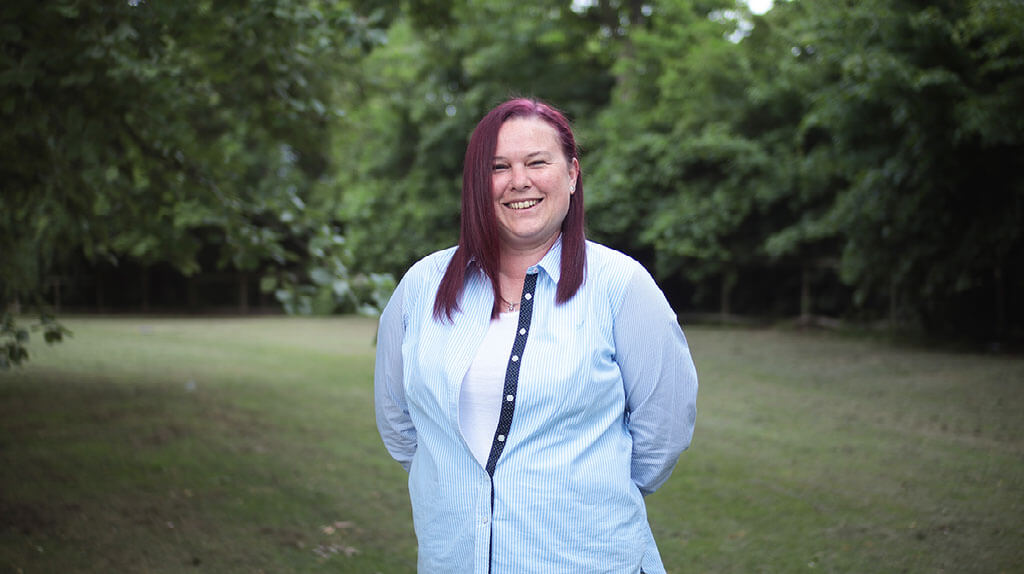15 years since smokefree law – campaigners and the public share their memories
HEALTH CAMPAIGNERS are calling for more action from the Government to reduce smoking on the 15 year anniversary of the 2007 smokefree law.
15 years on from one of the most popular and successful pieces of legislation to protect health, tobacco is still England’s single biggest killer and research now shows that 2/3 long term smokers will die from their addiction.
July 1st 2022 is the 15th anniversary of the 2007 smokefree legislation that put an end to workers being exposed to toxic secondhand smoke inside public spaces such as offices, shops and pubs. Ex-smokers, members of the public and bar staff have shared their recollections.
Smoking rates in the North East began to fall dramatically from 2005 as a major campaign for a “Smoke Free North East” began, and continued action to tackle smoking has resulted in the largest regional fall in smoking in England. But in 2015 it was discovered that two out of three smokers will die from smoking….more than the 1 in 2 previously thought.
A major independent review published in June 2022 by Javed Khan “Making Smoking Obsolete” is urging the Government to take death and disease caused by smoking more seriously. It recommends amongst other things raising the age of sale to 21, a licencing scheme to sell tobacco, more support and campaigns to encourage people to quit and the tobacco industry made to pay for prevention through a levy.
Ailsa Rutter OBE Director of Fresh and Balance said: “The Smokefree law was badly needed but also wanted by the vast majority of people. It continues to be one of the most popular laws in recent history, as well as one of the most important for people’s health.
“8 milllion people have been killed by smoking since the 1970s with 113,000 deaths here in the North East since 2000 alone. What we didn’t know then but know now is that smoking kills 2/3 smokers, and despite seeing some of the biggest falls in smoking, around 325,000 people still smoke in our region.
“This is a crucial moment in time and we urge the Government now to do the right thing and take action to protect more lives, especially among poorer families. We have come so far in 15 years – we have the potential to change and save lives in the next 15.”
Louise Morris, 46, from Newcastle, quit smoking in 2008 for the sake of her daughter and said: “I think the smokefree law helped a lot of people to quit. It was too handy to sit and light a cigarette up when you were at a restaurant, in a bar or even at work. The convenience wasn’t there anymore, you didn’t have that temptation of being surrounded by people who were smoking. People went longer without having a cigarette, and I think that helped them to be able to quit and not have that craving. The craving doesn’t last very long, and when you get over it, you’re not lighting up again.
“I quit in 2008, and one of the main reasons was for my daughter. I worried about her being at risk of breathing in secondhand smoke. She’s 17 now and started this journey with me when she was a toddler, so she’s seen the change in me and she’s grown up in a very different world. I can’t imagine ever going back to that, and I think it would be amazing to have a smokefree generation.”
Amanda Healy is chair of the Association of Directors of Public Health North East and Director of Public Health for County Durham, said: “Across our region we have made good progress reducing smoking rates by working together in partnership with the NHS and local communities. And yet smoking is still our biggest killer, and we know this is nearly always an addiction that starts in childhood.
“Tobacco smoke causes 16 types of cancer, heart disease, lung disease, dementia, stroke and childhood illness. It’s a driver of poverty too and it robs people of many years of life and has a negative impact on the economy and for our businesses when they lose their staff through preventable illness. That’s why we now need a discussion about ending smoking once and for all.”
Prof Anil Namdeo, Professor of Air Quality Management at Northumbria University, Newcastle, said: “The smokefree law in 2007 came too late to prevent thousands of deaths of workers in shops, cafes, pubs and bars who died from secondhand smoke in the 20th century – but was necessary and popular to protect people in the future.
“When a cigarette burns, it releases thousands of chemicals with at least 69 causing cancer. Over 80% of cigarette smoke is invisible, and children are particularly vulnerable as they breathe more rapidly and have less developed airways and immune systems.
“The dangers of cigarette smoke and secondhand smoke have not gone away, even now, 15 years after the passing of the smoke-free law. Indoor smoking in public places may have reduced but there are still many occurrences of cigarette smoking in homes and cars. This exposes smokers and people nearby to the harmful chemicals in the smoke endangering their health and needs to be addressed.
“We are all aware of issues around environmental pollution in cities but that is not a reason to breathe in smoke as well.”
Liz Blackshaw, Northern TUC Regional Secretary said: “The 2007 law has gone a long way to safeguard workers from exposure to second-hand tobacco smoke for the last 15 years, which was a major cause of heart disease amongst non-smokers who work with people who smoke. Prior to this, around 700 workers a year died as a direct result of second-hand smoke in their workplace. It was also responsible for many thousands of episodes of illness, including asthma attacks and exacerbation.
“All workplaces should have a fit-for-purpose smoke-free policy, to ensure legal compliance, worker safety and support to staff who would like to give up smoking. It should not be an isolated action but part of a comprehensive approach to promoting health and preventing risks at work. Specific measures on smoking should be part of the employer’s overall plan for health and wellbeing at work. As the home of the Better Health at Work Award, we see hundreds of north east and Cumbrian employers proactively doing this really well and supporting all staff to look after their health, safety and wellbeing.
“Hopefully, this will stand our region in the best stead to help achieve the laudable aim of Smokefree 2030 and contribute to further rebalancing the ingrained health inequalities and poverty premium on health and health outcomes, stay in quality work – which we know is beneficial to our physical and mental wellbeing, and ultimately, allow people to live longer in good health.”
Ex-smoker Danny Patterson from North Shields said: “I remember when I was younger, and I used to go with my dad and my uncles to the pub. I remember it being misty or foggy. You could smell it when you went in, you could smell the smoke, I was only young. I have a memory of my eyes watering from all the smoke, I remember rubbing my eyes a lot. I know at the time that the ban came in that they weren’t happy about it, my dad and his friends, they were very heavy smokers. He’s quit now but at the time he smoked everywhere. I started when I was 18 and I am 30 now so it was already banned by then.
“I am working at a pub at the moment. If smoking were allowed inside – since I’ve quit, I wouldn’t be too happy about it because one of my main problems in terms of temptation is seeing people smoking. I would instantly want to have one. I wouldn’t like it at all, just the temptation being there. If I’m not around smoking, then I don’t think about it. If I have really bad cravings, I have a vape that I use but it’s when I go out and have a drink, that’s when I will get the temptation – so it would be a no, no for me. It’s a really good thing that smoking is not allowed indoors anymore.
“When people smoke indoors you can see it in the air and you’re going to be breathing that in. It’s probably saved a lot of people’s lives in the long run – both smokers and other people like those of us working in pubs and kids like me when I was young.”
Public opinion
Support for Government action on smoking has continued to grow since then, particularly among smokers.
The public supports the Khan Review’s [1] recommendations to make England smokefree with around three quarters (74%) supporting the Government’s Smokefree 2030 ambition, and with little difference between those who voted Conservative in the 2019 election (73%) and those who voted Labour (79%). [2] Furthermore in the North East:
- Only 6% of people in the region think the government is doing too much when it comes to reducing smoking
- 75% of people in the region support a target to end smoking by 2030 which would mean fewer than 5% of people smoking.
- 82% support requiring businesses to have a valid licence to sell tobacco which can be removed if caught more than once selling to underage smokers.
- 75% support requiring tobacco manufacturers to pay a levy to government for measures to help smokers quit and prevent young people from taking up smoking.
- Nearly 9/10 people (86%) in the North East support the 2007 smokefree law
Smoking and the North East – the facts
- Around 15% of people in the North East smoke – over 320,000 people. The North East has seen the largest fall in smoking in England since 2005 when 29% of people smoke.
- 4 out of 10 households in the North East (42%) with a smoker are living in poverty – compared with 3 out of 10 nationally in England. It means 112,000 households in the North East where someone smokes is living in poverty, including 153,040 adults of working age, 28,005 pensioners and around 72,404 dependent children.
- Smoking costs the NE around £887 million a year in healthcare, social care costs and lost earnings.
- £124.9 million to the NHS from smoking-related healthcare –33,355 hospital admissions, 1.2m GP consultations, nearly 695,000 GP prescriptions, 413,000 practice nurse consultations and over 224,700 outpatient visits.
- £66.9 million in social care costs, with smokers needing social care at a younger age than non-smokers for everyday tasks such as dressing, walking and using the toilet due to smoking. This includes the cost of care to local authorities, care provided in the home and, for the first time, residential care costs.
- £684 million a year in lost earnings and employment prospects. Smokers are not only more likely to die in working age, but more likely to become ill, increasing the likelihood of being out of work and reducing their average wage.
- North East smokers spend around £634 million a year on tobacco, or approximately £2,000 per smoker. An estimated 24,000 jobs would be created in the region by freeing up
In 2022 three quarters (74%) of the public support government intervention or think government should do more with only 6% thinking government is doing too much. This includes only 18% of smokers themselves thinking government is doing too much to limit smoking, down from 51% when YouGov first asked the question in 2009.[2]


